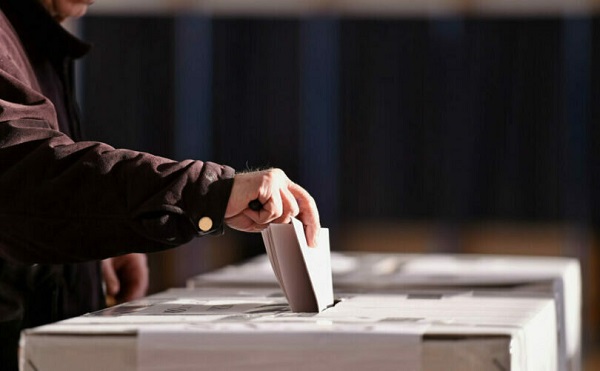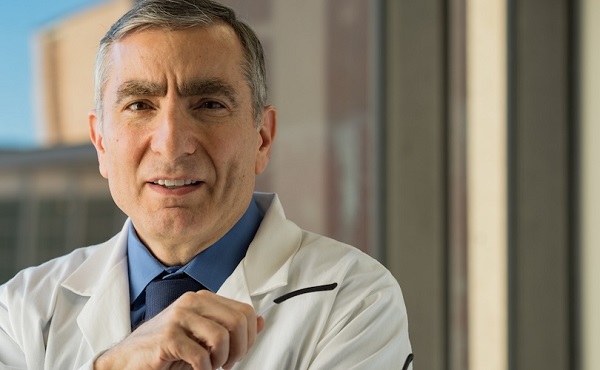Opinion
Medicine Hat, population 63,260 has 5 pools and a man made swimming lake. Red Deer should do better.

The City of Medicine Hat recorded a population of 63,260 in 2016
The City of Medicine Hat has many options for residents and visitors for the community when it comes to swimming.
2 Indoor pools= Kinsmen Aquatic Park (FLC) and the Crestwood Pool (no 50m pools)
3 Outdoor pools= Strathcona Pool, Heights Pool and the Hill Pool
Medicine Hat has a swimming lake= Echo Dale
Echo Dale, the largest of Medicine Hat’s parks, is located a short distance west of Medicine Hat along the South Saskatchewan River. The park has two man-made lakes: one for swimming and one for paddle boating and fishing.
Echo Dale Regional Park is an oasis for people and wildlife and has more than 110,000 visitors each year. Patrons range from sun-loving swimmers to those who enjoy sitting around a fire at night, to the regulars who walk the trails each day throughout the year, no matter how bad the weather!
From the historic farm site on the west side of the park to the day use area on the far east side of the park and all the others areas in between, the pristine condition of Echo Dale Regional Park is a favorite. Claim your favorite spot around the Swim Lake or set up for a family picnic at the boat lake which is stocked with rainbow trout for those wanting to fish.
New playground equipment in the shape of a pirate ship sits on the beach at the swim lake and new playground equipment at the boat lake, all add up to summertime fun!
Red Deer has a greater opportunity in having a real natural lake. Will Red Deer build a park? NO, they will likely plan on houses, and apartment buildings that may never get built, unless we go into a boom portion of the boom-bust cycle. This is the simplistic, easiest and safest plan with a low return on investment. It ignores the high-profile location and possibilities of the lake, but it has less risk. A wall will be built to hide the lake from Hwy 2.
Remember, Hazlett Lake is a natural lake that covers a surface area of 0.45 km2 (0.17 mi2), has an average depth of 3 meters (10 feet). Hazlett Lake has a total shore line of 4 kilometers (2 miles). It is 108.8 acres in size. Located in the north-west sector of Red Deer.
So, please, the next time you drive north on Hwy 2, as you pass the Hwy 11A turnoff, look out the passenger window and check out Hazlett Lake.
That lake is part of the City of Red Deer, and is a portion of a Major Area Structure Plan north of Hwy 11A previously mentioned. So as you drive by, think of what you would like to see done with your lake.
One scenario that could compliment the lake and address the desire for a regional aquatic centre and a 50-metre pool is turning the proposed community centre on the northeast corner of the lake into a Collicutt Centre type of complex.
What is more natural than having an aquatic centre on the lake? You could have your 50-metre pool inside, a lake for scuba diving, kayaking, canoeing, paddle boating, swimming, under-water photography, fishing, sun tanning, races, to name but a few.
The winter could see skating, hockey, to complement the indoor ice rink, as well as ice-fishing and ice sculptures and sleigh rides, again, to name but a few. This would all be visible to the traffic on Hwy 2.
Would a regional aquatic centre built on Hazlett Lake kick-start development in Red Deer’s north at a time of a slowdown in the energy sector? Would a Hazlett Lake regional aquatic centre, visible from Hwy 2, create a tourism trade that would bolster Red Deer’s hospitality industry? Would a Hazlett Lake regional aquatic centre enhance our position as a sports destination? Would a Hazlett Lake regional aquatic centre ensure that everyone would have an opportunity to enjoy the lake? I hope so.
I think the Hazlett Lake is worth preserving, and I hope that when my grandchildren drive north on Hwy 2 just past the Hwy 11A turnoff, that they will be able to look out the passenger side window and see Hazlett Lake.
Perhaps they will be able to tan on a beach, watch a naturescape in action, paddle a canoe, swim, skate, maybe have a bonfire on a beach and roast a marshmallow. We do need to act now, before the plans get too entrenched in the least desired direction.
Please contact the city before it is too late.
Business
Stripped and shipped: Patel pushes denaturalization, deportation in Minnesota fraud

FBI Director Kash Patel issued a blunt warning over the weekend as federal investigators continue unraveling a sprawling fraud operation centered in Minnesota, saying the hundreds of millions already uncovered represent “just the tip of a very large iceberg.”
In a lengthy statement posted to social media, Patel said the Federal Bureau of Investigation had quietly surged agents and investigative resources into the state well before the scandal gained traction online. That effort, he said, led to the takedown of an estimated $250 million fraud scheme that stole federal food aid intended for vulnerable children during the COVID pandemic.
According to Patel, the investigation exposed a network of sham vendors, shell companies, and large-scale money laundering operations tied to the Feeding Our Future case. Defendants named by the FBI include Abdiwahab Ahmed Mohamud, Ahmed Ali, Hussein Farah, Abdullahe Nur Jesow, Asha Farhan Hassan, Ousman Camara, and Abdirashid Bixi Dool, each charged with offenses ranging from wire fraud to conspiracy and money laundering.
Patel also said Abdimajid Mohamed Nur and others were charged in a separate attempt to bribe a juror with $120,000 in cash. He noted that several related cases have already resulted in guilty pleas, prison sentences of up to 10 years, and nearly $48 million in restitution orders.
Despite those outcomes, Patel warned the case is far from finished.
“The FBI believes this is just the tip of a very large iceberg,” he said, adding that investigators will continue following the money and that the probe remains ongoing. Patel further confirmed that many of those convicted are being referred to immigration authorities for possible denaturalization and deportation proceedings where legally applicable.
The renewed focus follows a viral video circulated by independent journalist Nick Shirley, which appeared to show multiple childcare and learning centers operating as empty or nonfunctional storefronts. The footage sparked immediate backlash from Republicans, including Vice President JD Vance.
House Majority Whip Tom Emmer accused Minnesota Gov. Tim Walz of sitting idle while massive sums were stolen from taxpayers. Walz addressed the allegations during a November press conference, before the full scope of the fraud became public, saying the scandal “undermines trust in government” and threatens programs meant to help vulnerable residents.
“If you’re committing fraud, no matter where you come from or what you believe, you are going to go to jail,” Walz said at the time.
Authorities say the alleged schemes date back to at least 2015, beginning with overbilling Minnesota’s Child Care Assistance Program and later expanding into Medicaid-funded disability and housing programs. One such housing initiative, aimed at helping seniors and disabled residents secure stable housing, was shut down earlier this year after officials cited what they described as large-scale fraud.
The fallout has already reached the federal level. Last month, President Trump announced the suspension of Temporary Protected Status for Somali nationals, arguing that Minnesota had become a hub for organized welfare fraud and money laundering activity.
Business
Mainstream media missing in action as YouTuber blows lid off massive taxpayer fraud

Vice President JD Vance is giving public credit to a YouTube journalist for doing what he says legacy media and elite institutions have failed to do: follow the money in Minnesota. In a post on X, Vance praised independent reporter Nick Shirley for digging into alleged fraud networks tied to the state, saying Shirley “has done far more useful journalism than any of the winners of the 2024 Pulitzer prizes.” The comment was a direct response to a video Shirley shared online documenting what he described as widespread fraud, with Shirley claiming his team identified more than $110 million in suspicious activity in a single day while confronting facilities allegedly receiving millions in public funds.
Shirley’s reporting has been circulating widely among conservatives, with commentators amplifying clips of him visiting supposed daycare and education centers that appeared inactive despite receiving massive federal aid. Conservative media personality Benny Johnson said Shirley had exposed more than $100 million in Minnesota Somali-linked fraud routed through fake daycare and healthcare fronts, adding to the pressure on state leadership. The issue gained further traction after Tom Emmer, Minnesota’s top House Republican, demanded answers from Gov. Tim Walz following a viral clip showing Shirley confronting workers at an alleged daycare in South Minneapolis. Shirley reported the center, called the “Quality Learning Center,” showed no visible activity despite claims it served up to 99 children, and even misspelled “learning” on its signage. As Shirley approached, a woman inside was heard shouting “Don’t open up,” while incorrectly accusing him of being an ICE agent.
🚨 Here is the full 42 minutes of my crew and I exposing Minnesota fraud, this might be my most important work yet. We uncovered over $110,000,000 in ONE day. Like it and share it around like wildfire! Its time to hold these corrupt politicians and fraudsters accountable
We ALL… pic.twitter.com/E3Penx2o7a
— Nick shirley (@nickshirleyy) December 26, 2025
The controversy builds on earlier reporting from City Journal, which published a November investigation citing federal counterterrorism sources who said millions of dollars siphoned through Minnesota fraud schemes had been sent overseas, with some of the money allegedly ending up in the hands of Al-Shabaab. One confidential source quoted in the report bluntly claimed, “The largest funder of Al-Shabaab is the Minnesota taxpayer.” Since that report, the scrutiny has widened inside the Trump administration. Treasury Secretary Scott Bessent has announced that the Treasury Department is examining whether Minnesota taxpayer funds were diverted to terrorist-linked groups, while Education Secretary Linda McMahon has publicly called on Walz to resign amid separate allegations of large-scale education fraud within the state’s college system.
Taken together, the attention from Vance, congressional Republicans, and multiple federal agencies has elevated Shirley’s reporting from viral internet content to a flashpoint in a broader debate over fraud, accountability, and the role of independent journalists. For the vice president, the message was clear: real accountability sometimes comes not from prize committees or press rooms, but from outsiders willing to ask uncomfortable questions and stand in front of locked doors with a camera rolling.
-

 Agriculture1 day ago
Agriculture1 day agoEnd Supply Management—For the Sake of Canadian Consumers
-

 Digital ID1 day ago
Digital ID1 day agoCanadian government launches trial version of digital ID for certain licenses, permits
-

 Alberta1 day ago
Alberta1 day agoAlberta Next Panel calls to reform how Canada works
-

 Business22 hours ago
Business22 hours agoThe “Disruptor-in-Chief” places Canada in the crosshairs
-

 International19 hours ago
International19 hours agoGeorgia county admits illegally certifying 315k ballots in 2020 presidential election
-

 Artificial Intelligence23 hours ago
Artificial Intelligence23 hours agoUK Police Pilot AI System to Track “Suspicious” Driver Journeys
-

 Energy18 hours ago
Energy18 hours ago‘The electric story is over’
-

 International1 day ago
International1 day agoWorld-leading biochemist debunks evolutionary theory






